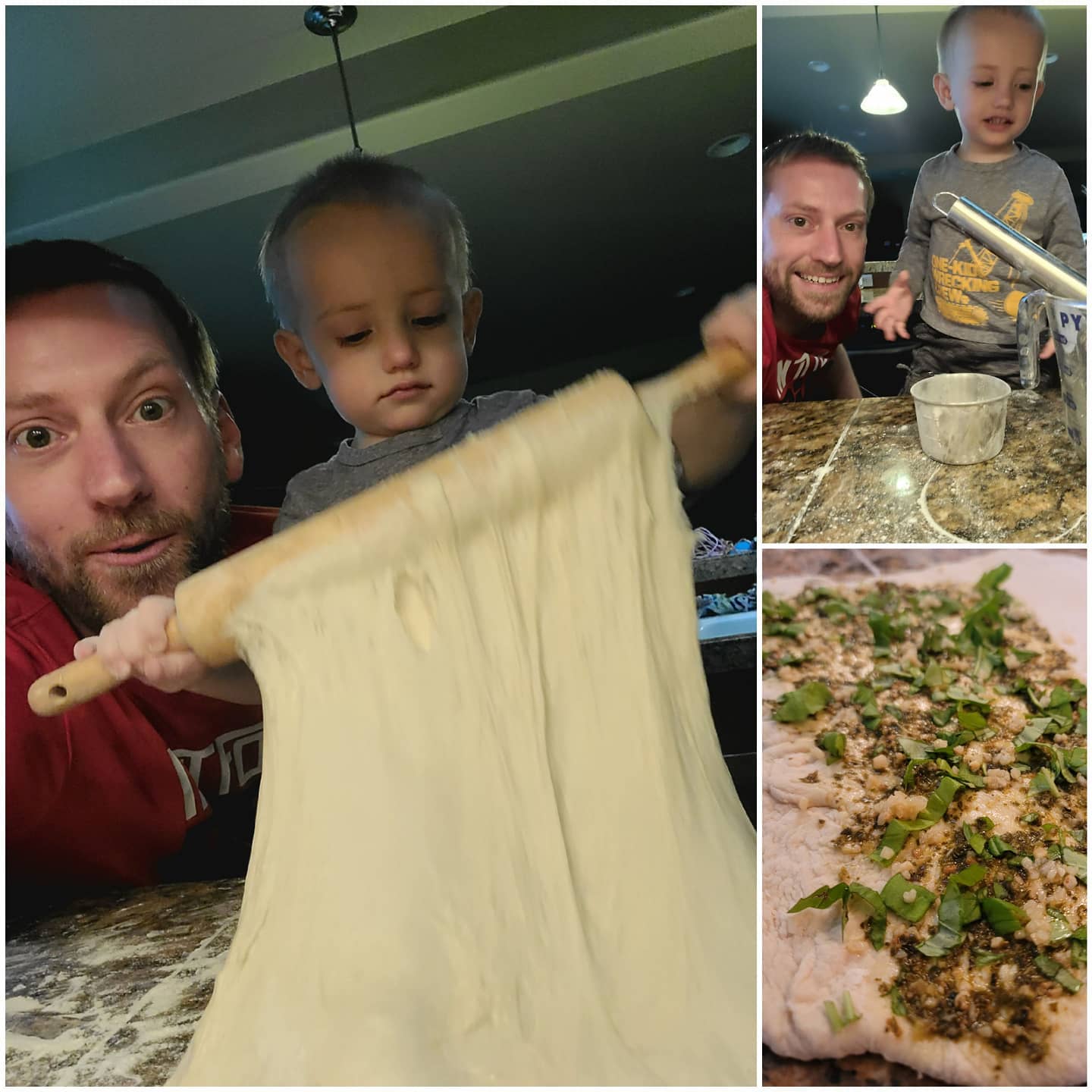
Baking Basics: Mastering the Art of Baking
Discover the essential baking basics you need to know to become a master in the kitchen. From understanding the science behind baking to learning essential techniques and troubleshooting common baking challenges, this comprehensive guide will help you elevate your baking skills. Get ready to create delicious treats that will impress everyone!
Introduction:
Baking is a wonderful blend of art and science that brings joy to both the baker and those who indulge in the delicious creations. Whether you’re a baking enthusiast looking to expand your skills or a beginner eager to learn the baking basics, this article is your ultimate guide. From understanding the key ingredients and their functions to exploring various techniques and troubleshooting tips, we’ll cover everything you need to know to become a confident baker. So, roll up your sleeves, preheat your oven, and let’s dive into the wonderful world of baking!
Table of Contents
| Heading | Topics |
|---|---|
| Baking Basics: An Overview | baking essentials, baking techniques, baking science |
| Essential Baking Tools and Equipment | baking supplies, must-have baking tools, equipment for baking |
| Understanding the Role of Ingredients | baking ingredients, key ingredients in baking, functions of baking ingredients |
| The Science Behind Baking | baking chemistry, baking reactions, science in baking |
| Measuring and Scaling Ingredients | baking measurements, ingredient ratios, accurate ingredient scaling |
| Mixing Techniques for Perfect Batters and Doughs | mixing methods, batters and doughs, combining ingredients |
| Baking with Leavening Agents | leavening agents in baking, yeast, baking powder, baking soda |
| Exploring Different Types of Flours | types of flour, all-purpose flour, whole wheat flour, specialty flours |
| The Art of Proper Dough Handling | dough preparation, kneading, shaping dough |
| Understanding Oven Temperatures and Settings | oven temperature guide, preheating, adjusting baking time and temperature |
| Mastering the Art of Pastry | pastry making, pie crusts, tart shells |
| The Secrets of Perfect Cakes | cake baking, cake decorating, frosting |
| The World of Breads and Yeast-Based Treats | bread baking, yeast breads, sweet rolls |
| Tempting Cookies and Biscuits | cookie baking, biscuit recipes, cookie dough variations |
| Savory Baking Delights | savory baking, quiches, savory pies |
| Gluten-Free Baking Basics | gluten-free recipes, alternative flours, gluten-free baking techniques |
| Vegan Baking: A Delicious Twist | vegan desserts, egg substitutes, dairy-free baking |
| Troubleshooting Baking Challenges | common baking problems, cake sinking, burnt bottoms |
| Baking for Special Diets | allergen-free baking, diabetic-friendly recipes, low-carb baking |
| Storage and Freezing Techniques | proper storage of baked goods, freezing baked goods |
| Baking with Kids: Fun and Educational | baking activities for kids, family-friendly recipes |
| Baking Tips and Tricks from the Experts | baking secrets, professional baking tips |
| Frequently Asked Questions (FAQs) | baking basics FAQs, common baking questions |
| Conclusion | final thoughts on baking basics |
| Private Prompts Library and SEO Services | access to private prompts, SEO services |
Baking Basics: An Overview
Baking Basics encompasses a wide range of essential knowledge and techniques that form the foundation of successful baking. From understanding the fundamentals of ingredients and their functions to mastering various mixing methods and baking techniques, these skills are crucial for achieving consistent and delicious results in the kitchen.
In this section, we will explore the key components that make up the world of baking. By understanding these baking basics, you’ll be equipped with the knowledge to create an array of delightful treats. Let’s get started!
Essential Baking Tools and Equipment
To embark on your baking journey, it’s important to have the right tools and equipment at your disposal. Having the essential baking supplies ensures that you can execute recipes accurately and efficiently. From measuring cups and spoons to mixing bowls and spatulas, each tool serves a specific purpose in the baking process.
Some must-have baking tools include:
- Measuring Cups and Spoons: Accurate measurements are crucial in baking. Invest in a set of measuring cups and spoons to ensure precise quantities of ingredients.
- Mixing Bowls: Different-sized mixing bowls are essential for combining ingredients and preparing batters and doughs.
- Whisk: Whisks are versatile tools used for mixing, incorporating air into batters, and creating light and fluffy textures.
- Rubber Spatula: A rubber spatula helps in scraping the sides of bowls, folding ingredients, and ensuring thorough mixing.
- Baking Pans and Sheets: Baking pans and sheets come in various shapes and sizes and are used for baking cakes, cookies, bread, and more.
- Oven Thermometer: An oven thermometer ensures accurate temperature readings, allowing you to adjust accordingly.
Remember, having high-quality baking tools and equipment enhances your baking experience and leads to better results. Invest in reliable products that will last and contribute to your baking success.
Understanding the Role of Ingredients
Every ingredient plays a crucial role in baking, and understanding their functions is essential for achieving the desired outcomes. From flour and sugar to eggs and leavening agents, let’s explore the key ingredients used in baking:
1. Flour: Flour provides structure and texture to baked goods. All-purpose flour is the most common type used, but specialty flours like whole wheat, cake flour, and bread flour have their unique characteristics.
2. Sugar: Sugar adds sweetness, flavor, and moisture to baked goods. It also helps with browning and contributes to the texture of the final product.
3. Eggs: Eggs bind ingredients together, add moisture, and contribute to the structure and leavening of baked goods.
4. Leavening Agents: Leavening agents like yeast, baking powder, and baking soda are responsible for creating rise and aeration in baked goods.
5. Fats: Fats, such as butter, oil, and shortening, add moisture, tenderness, and flavor to baked goods.
6. Liquids: Liquids like milk, water, and extracts provide moisture and contribute to the overall texture and flavor of baked goods.
Each ingredient interacts with others during the baking process, creating chemical reactions that transform raw ingredients into delicious treats. Understanding these interactions empowers you to make informed decisions and experiment with recipes.
The Science Behind Baking
Baking is not just an art; it’s also a science. Understanding the scientific principles behind baking helps demystify the process and allows you to troubleshoot and innovate.
- Heat Transfer: Baking involves heat transfer, which occurs through conduction, convection, and radiation. Conduction transfers heat from the oven to the baking pan, while convection distributes heat evenly through the air inside the oven. Radiation refers to the heat that directly reaches the surface of the food.
- Chemical Reactions: Baking triggers various chemical reactions that result in the transformation of ingredients. For example, the Maillard reaction is responsible for browning and flavor development, while the reaction between baking powder and liquid activates the leavening agents, causing the batter or dough to rise.
- Protein Coagulation: Protein coagulation occurs when proteins in the ingredients, such as eggs and flour, denature and form a network, providing structure and stability to baked goods.
- Starch Gelatinization: Starch, found in flour, undergoes gelatinization when exposed to heat and liquid, thickening the batter or dough and contributing to the texture of the final product.
By understanding these scientific principles, you can make adjustments to your baking process and troubleshoot common issues. It also opens up opportunities for experimentation and innovation, allowing you to create unique and delicious baked goods.
Measuring and Scaling Ingredients
Accurate measuring and scaling of ingredients are crucial for consistent and successful baking. Precision in measurements ensures that the proportions of ingredients are balanced, leading to the desired texture, flavor, and structure in your creations.
Here are some essential tips for measuring and scaling ingredients:
- Use Measuring Cups and Spoons: Use standardized measuring cups and spoons to measure dry and liquid ingredients accurately. Level off the top of dry ingredients with a straight edge for precise measurements.
- Weigh Ingredients: For even greater accuracy, consider using a kitchen scale to weigh ingredients, especially when following recipes that provide weight measurements.
- Follow the Recipe: Pay close attention to the recipe instructions and follow the specified measurements. Baking is a science, and even slight variations can affect the outcome.
- Practice Taring: When using a scale, practice taring (zeroing out) the weight of the container or bowl before adding the ingredients. This allows you to measure ingredients without including the weight of the container.
- Fluid Measurements: Use liquid measuring cups with clear markings and pour the liquid into the cup while it is placed on a level surface. Read the measurement at eye level for accuracy.
Remember, precision in measuring is key to achieving consistent results in your baked goods. Take your time, follow the instructions, and embrace the science of baking.
Mixing Techniques for Perfect Batters and Doughs
Mastering mixing techniques is essential for creating perfect batters and doughs. The way ingredients are combined affects the texture, structure, and overall quality of your baked goods. Here are some common mixing methods:
- Creaming Method: The creaming method is used for cakes, cookies, and some pastries. It involves beating butter and sugar together to incorporate air, creating a light and fluffy texture. Eggs and other liquid ingredients are added gradually, followed by dry ingredients.
- Muffin Method: The muffin method is commonly used for quick breads, muffins, and pancakes. Dry ingredients are combined separately, while liquid ingredients are mixed separately. The two mixtures are then quickly combined, forming a lumpy batter. Overmixing should be avoided to maintain a tender texture.
- Folding Method: The folding method is used when you want to incorporate delicate ingredients, such as whipped cream or beaten egg whites, into a batter or dough. It involves gently combining the ingredients in a folding motion to preserve air and prevent deflation.
- Rubbing Method: The rubbing method is used for making pastry dough, scones, and biscuits. It involves rubbing fat into the dry ingredients until the mixture resembles breadcrumbs. Liquid is then added gradually until a dough forms.
- Kneading: Kneading is crucial for developing gluten in bread and pizza dough. It involves pressing, folding, and stretching the dough to develop elasticity and create a smooth and uniform texture.
By understanding these mixing techniques and when to use them, you’ll be able to create the perfect consistency and texture in your batters and doughs, resulting in exceptional baked goods.
Baking with Leavening Agents
Leavening agents are essential ingredients in baking as they contribute to the rise and aeration of baked goods. There are different types of leavening agents, each with its specific properties and uses. Let’s explore the most common ones:
- Yeast: Yeast is a living organism that reacts with sugar and warm liquid to produce carbon dioxide, which causes the dough to rise. It is commonly used in bread and other yeast-based recipes.
- Baking Powder: Baking powder is a combination of baking soda, cream of tartar, and a dry acid. It reacts with moisture and heat, producing carbon dioxide and causing the batter or dough to rise. Baking powder is commonly used in cakes, muffins, and quick breads.
- Baking Soda: Baking soda is a base that reacts with acid (such as vinegar, lemon juice, or buttermilk) to produce carbon dioxide and create a rise in the batter or dough. Baking soda is used in recipes that have acidic ingredients.
It’s important to follow the instructions and use the correct amount of leavening agent specified in the recipe. Too much or too little can affect the rise and texture of your baked goods. Also, be mindful of the expiration dates of your leavening agents, as they lose their effectiveness over time.
Exploring Different Types of Flours
Flour is a staple ingredient in baking, and different types of flour have varying properties and uses. Understanding the characteristics of each type will allow you to choose the most suitable flour for your desired baked goods. Let’s explore some common types of flour:
- All-Purpose Flour: All-purpose flour is the most versatile type of flour and is suitable for a wide range of baked goods. It has a moderate protein content, which provides structure and tenderness.
- Whole Wheat Flour: Whole wheat flour is made from the entire wheat kernel, including the bran, germ, and endosperm. It has a higher fiber content and provides a nutty flavor and denser texture to baked goods.
- Cake Flour: Cake flour has a lower protein content, resulting in a tender and delicate texture. It is commonly used in cakes, pastries, and other delicate baked goods.
- Bread Flour: Bread flour has a higher protein content, which creates a stronger gluten network, resulting in a chewy texture. It is ideal for yeast-based recipes, such as bread and pizza dough.
- Pastry Flour: Pastry flour has a protein content between all-purpose flour and cake flour. It strikes a balance between tenderness and structure, making it suitable for pastries, cookies, and pie crusts.
- Alternative Flours: Alternative flours, such as almond flour, coconut flour, and gluten-free flour blends, are used in specialty baking. These flours cater to dietary restrictions or preferences, offering unique flavors and textures.
Experimenting with different types of flour can yield interesting and delicious results. However, when substituting flours in recipes, be mindful of the variations in texture, flavor, and moisture absorption.
The Art of Proper Dough Handling
Dough handling is a fundamental skill in baking and cooking, influencing the texture and quality of various baked goods and pastries. Whether you’re making bread, pie crusts, cookies, or pizza dough, mastering the art of proper dough handling is essential to achieve delicious and consistent results. Here are some valuable tips and techniques to help you become a dough-handling expert.
1. Know Your Dough:
- Different types of dough have distinct characteristics and requirements. Understanding the nature of the dough you’re working with will help you adapt your handling techniques accordingly. For example, pie dough requires delicate handling to maintain its flakiness, while bread dough benefits from thorough kneading to develop gluten.
- Bread Dough: Bread dough requires kneading to develop gluten, which gives the bread structure and elasticity. Knead the dough until it becomes smooth and elastic, and it springs back when lightly pressed with your finger.
- Pie and Tart Dough: Pie and tart dough should be handled with care so it remains flaky and delicious.
1.1 Keep It Cool:
- Temperature plays a crucial role in dough handling. Most recipes call for using cold ingredients, such as chilled butter, cold water, or refrigerated dough, to maintain the proper consistency and prevent the dough from becoming sticky. When handling dough, work in a cool environment, and avoid warm surfaces like direct sunlight or a hot kitchen.
2. Use Proper Measuring Techniques:
- Accurate measurements are key to successful dough handling. Use dry measuring cups for flour and other dry ingredients, and liquid measuring cups for liquids. Level off the excess flour with a straight edge to ensure consistency in the dough’s hydration.
3. Kneading with Care:
- Kneading is a critical step in bread and pizza dough making. It helps develop gluten, giving the dough its elasticity and structure. Knead the dough using the heel of your hand in a rhythmic motion, stretching it away from you, then folding it back. Avoid over-kneading, as it can lead to tough dough. The dough is ready when it becomes smooth and springs back when gently pressed.
4. Practice Resting Periods:
- Allow the dough to rest after kneading to relax the gluten and improve its elasticity. This resting period, known as “proofing” in bread making, helps the dough rise better and results in a softer texture. Cover the dough with a damp cloth or plastic wrap to prevent it from drying out during resting.
5. Roll with Precision:
- When rolling out dough for pie crusts, cookies, or pastries, use a lightly floured surface and a rolling pin to achieve an even thickness. Roll the dough in one direction, turning it occasionally to maintain a uniform shape. Avoid excessive rolling, as it can lead to tough dough.
6. Handle with Lightness:
- Treat the dough delicately to prevent it from becoming tough. When incorporating ingredients or shaping, use a gentle touch. Overworking the dough can cause gluten development and make it difficult to achieve the desired texture.
7. Chilling the Dough:
- After shaping your dough, refrigerate it before baking. Chilling helps the dough maintain its shape, especially for cookies and pie crusts, and enhances flavor development.
8. Use Proper Storage Techniques:
- If not baking immediately, store the dough in an airtight container or wrap it tightly in plastic wrap to prevent it from drying out. Different types of dough have different storage times, so follow the recipe guidelines.
9. Learn from Experience:
- Dough handling is a skill that improves with practice. Don’t be discouraged by initial challenges; embrace mistakes as learning opportunities. Each batch of dough will teach you something new, and you’ll develop a better understanding of how to achieve the perfect consistency for different recipes.
By mastering the art of proper dough handling, you can elevate your baking and cooking skills, creating delectable and consistent treats that will impress family and friends. Remember, practice, patience, and attention to detail are the keys to becoming a proficient dough handler. Happy baking!**

